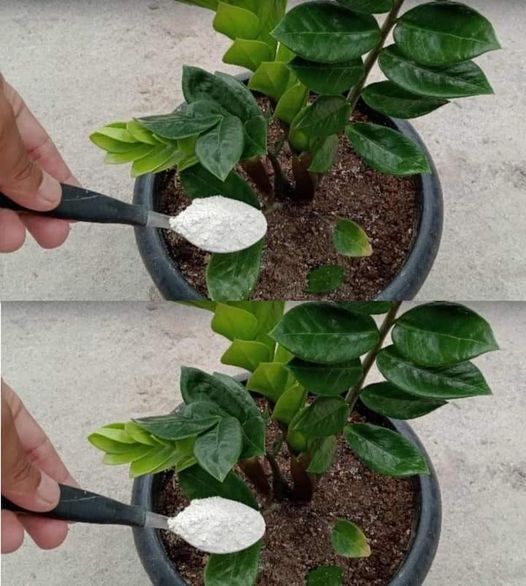Natural Fertilizer for Indoor Plants to Bloom Continuously
Indoor plants bring life and beauty into any space, but keeping them healthy and blooming continuously can be a challenge. One of the key factors to ensuring your indoor plants thrive and bloom year-round is providing them with the right nutrients. While there are many commercial fertilizers available, opting for natural fertilizers is a great choice for both your plants and the environment.
Natural fertilizers not only provide essential nutrients but also support a healthy, sustainable growing environment. In this article, we’ll explore natural fertilizers that will help your indoor plants bloom continuously, giving you a vibrant and flourishing indoor garden.
Why Choose Natural Fertilizers for Indoor Plants?
Natural fertilizers are derived from organic materials, and unlike synthetic fertilizers, they release nutrients slowly, providing plants with a steady supply of food. This ensures that your plants have consistent access to the nutrients they need to thrive. Moreover, natural fertilizers tend to improve soil health and structure, which benefits plant growth in the long term.
Using natural fertilizers also reduces the risk of chemical build-up in the soil, which can be harmful to your plants and the environment. For those looking for eco-friendly and sustainable solutions, natural fertilizers are a perfect choice.
Top Natural Fertilizers for Continuous Blooming
- Compost Tea
Compost tea is an excellent organic fertilizer that can boost the health and blooming of indoor plants. It’s made by steeping compost in water, which extracts beneficial microorganisms and nutrients. The resulting tea is rich in nitrogen, phosphorus, and potassium—three essential nutrients for plant growth. To make compost tea, mix about 1 cup of compost with 5 gallons of water, let it steep for 24-48 hours, and then strain it before using it on your plants. This nutrient-rich liquid helps improve plant health and encourages continuous blooming.
- Fish Emulsion
Fish emulsion is a powerful organic fertilizer made from fish by-products. It is rich in nitrogen, which promotes lush foliage growth, as well as phosphorus and trace minerals that encourage flowering. Fish emulsion is especially beneficial for plants that need regular feeding to keep them blooming, such as flowering houseplants. It’s best diluted with water (typically 1 tablespoon per gallon) and applied every 2-3 weeks during the growing season. Fish emulsion also has a strong odor, so it’s best used in a well-ventilated area.
- Bone Meal
Bone meal is made from crushed animal bones and is an excellent source of phosphorus, which is crucial for flower production. Phosphorus promotes strong root development and helps plants produce vibrant, long-lasting blooms. Bone meal also contains calcium, which supports overall plant health. To use bone meal, sprinkle it around the base of your plants or mix it into the soil. Bone meal is slow-release, so it will provide nutrients to your plants over an extended period.
- Epsom Salt
Epsom salt, or magnesium sulfate, is another natural fertilizer that can benefit flowering plants. Magnesium is essential for photosynthesis and helps plants produce energy, which is vital for continuous blooming. Epsom salt also helps improve the uptake of other nutrients like nitrogen and phosphorus. To use Epsom salt, dissolve 1 tablespoon of the salt in a gallon of water and water your plants with the solution once a month. It’s particularly effective for plants like roses, tomatoes, and peppers.
- Worm Castings
Worm castings are one of the most nutrient-dense natural fertilizers available. They are produced by earthworms and are rich in nitrogen, phosphorus, potassium, and beneficial microorganisms. Worm castings improve soil structure, enhance nutrient uptake, and promote healthy root systems. To use worm castings, simply top-dress your plants with a thin layer of castings or mix them into the soil. Regular use of worm castings can lead to healthier plants and more frequent blooms.
- Coffee Grounds
Used coffee grounds are a readily available, low-cost natural fertilizer that can provide plants with essential nutrients. They are rich in nitrogen and also contain small amounts of phosphorus and potassium. Coffee grounds help improve soil acidity, making them a great option for plants that thrive in slightly acidic conditions, like azaleas and hydrangeas. Simply sprinkle used coffee grounds on the soil surface or mix them into the potting mix.
- Seaweed or Kelp Extract
Seaweed or kelp extract is a fantastic natural fertilizer packed with micronutrients, growth hormones, and amino acids. It enhances plant metabolism, improves root development, and stimulates continuous flowering. Seaweed extract is available in both liquid and powdered forms. To use liquid kelp, dilute it as instructed and water your plants every 2-3 weeks. Seaweed is also excellent for boosting plant immunity, making it a great option for overall plant health.
How to Apply Natural Fertilizers
Applying natural fertilizers to your indoor plants requires a bit of care and attention. Here are a few tips to ensure you get the best results:
- Follow Dosage Instructions: Over-fertilizing can harm plants, so it’s important to follow the recommended application rates for each type of fertilizer.
- Watering Schedule: Water your plants thoroughly before applying fertilizer to ensure the nutrients are absorbed properly.
- Consistent Feeding: For continuous blooming, feed your plants regularly, but avoid fertilizing during dormant periods when plants are not actively growing.
Conclusion
Using natural fertilizers for your indoor plants is an effective and eco-friendly way to ensure they bloom continuously and thrive in your home. From compost tea to fish emulsion, there are many organic options available to provide your plants with the nutrients they need for healthy growth and vibrant flowers. Regularly applying these fertilizers, along with proper care and attention, will keep your plants looking beautiful all year long.
If you found this article helpful, be sure to like and share it with your friends and family! Spread the knowledge about these natural fertilizers and help others enjoy beautiful, blooming indoor plants!
